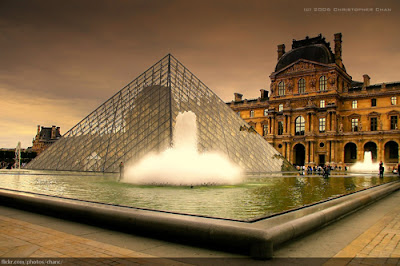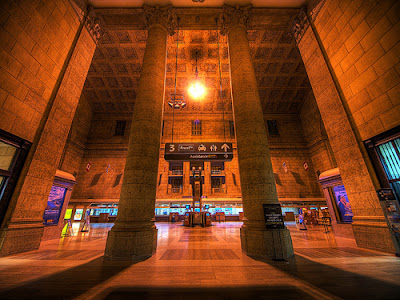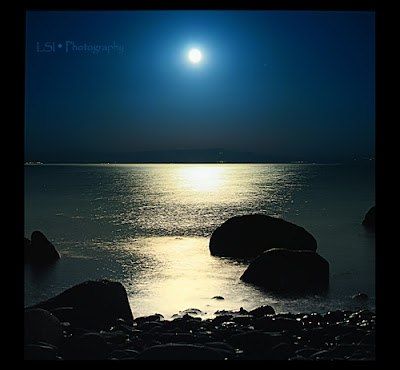When conditions are ideal and when there is sufficient light, digital photography is as simple as it gets, point and shoot. But it is when certain variables are at play like, the scene is not illuminated well, the subjects are moving, you are not permitted to use flash etc that the job gets a little bit challenging. And for those who enjoy taking up challenges and overcoming them, here are a few tips and tricks to take better digital photos in low light conditions – WITHOUT USING A FLASH.
 |
| Photo by Lambert Wolterbeek Muller |
There are instances when you are not permitted to use a flash and there are instances when using a flash will destroy the shot. Using flash takes away the mood of the scene by washing it will bright white light and also flattens the image; this problem is more so if you are using an inbuilt flash or a flash mounted directly on to the camera. Flashes also interfere with social moments and also disturb the ambience in certain settings like a Temple, Church, and Museum of Art etc. And then there are occasions when a flash is not effective to light up the scene, like shooting a landscape scene, a monument etc in low light conditions.
If you are using a DSLR, get a flash lens. Fast lenses are the ones with a wide aperture (f/1.2, f/1.4, f/1.8 etc). They let in more light to the camera’s sensor and so are ideal for low light photography. They need not be expensive, Canon 50mm f/1.8 prime retails for approximately $100 and produces outstanding results. The thing to remember when using a fast lens at their widest aperture setting is the shallow depth of field it produces. It is a good thing to have a soft blurred background for your photos but if you are not very careful about where you focus you will end up with not so pleasing results.
Most of the new generation digital cameras have a dedicated night mode with no flash option. If you are shooting with a point and shoot this might be your best option. If you are using a DSLR try the Program (p) mode, Aperture Priority (AV) mode or the Manual (m) mode.
Tips for Shooting in Low Light Conditions Without Using FlashGet a Fast Lens
If you are using a DSLR, get a flash lens. Fast lenses are the ones with a wide aperture (f/1.2, f/1.4, f/1.8 etc). They let in more light to the camera’s sensor and so are ideal for low light photography. They need not be expensive, Canon 50mm f/1.8 prime retails for approximately $100 and produces outstanding results. The thing to remember when using a fast lens at their widest aperture setting is the shallow depth of field it produces. It is a good thing to have a soft blurred background for your photos but if you are not very careful about where you focus you will end up with not so pleasing results.
Pre-set Camera Modes for Low Light Photography
Most of the new generation digital cameras have a dedicated night mode with no flash option. If you are shooting with a point and shoot this might be your best option. If you are using a DSLR try the Program (p) mode, Aperture Priority (AV) mode or the Manual (m) mode.
 |
| Photo by Christopher Chan |
Bump Up your ISO
Increasing your ISO will help you get higher aperture values and faster shutter speeds at the cost of image noise. So I would recommend increasing ISO only to the extent necessary to get acceptable exposure values.
 |
| Photo by Toni Blay |
Tripod and Cable / Wireless Release
The combination of a tripod and a remote shutter release mechanism can save your day only if your subject stays still. So if you are shooting a stationary subject use a tripod and a wireless trigger to get great photos in low light conditions without having to bump up your ISO. But if your subject is moving then it’s a whole new game you need much higher shutter speeds to freeze the motion and to eliminate shake. The shutter speed value needed in such situations is determined by how fast your subject is moving and how far you are from your subject. To get sharp pictures of people moving slowly try to get a minimum shutter speed of 1/125 or 1/250.
 |
| Photo by Andy |
White Balance
Shooting in low light often means, indoors / artificial light. Often times a mix of light from various sources. Getting white balance right in such situations is tricky. You could set your white balance right for the given scenario by using the custom white balance function or shoot RAW and select the preferred white balance while post processing.
 |
| Photo by Scott Hudson |
Image Stabilization
Image stabilization feature is one of the most useful advancements in photography. If your camera has this feature and you are hand-holding your camera, turn it on. It will help you get sharp images by compensating for the shake while shooting in low shutter speeds. Remember to turn it off if you are using a tripod or using any other stable surface to place your camera. Else it will do more harm than good by compensating for the shake that is not present.
Use Manual Focus
Low light conditions are not one of the preferred environments for the digital cameras auto focus feature. When there is not enough light the camera struggles to attain auto focus and hunts for points to focus. And often choosing the wrong area to focus, remember this could be disastrous when shooting with your shutter wide open (shallow depth of field). Switch the camera to manual focus mode and focus manually.
 |
| Photo by Paul Bica |
Use Burst / Continuous Shooting Mode
Every time you press the shutter release button in your camera you are actually inducing a certain amount of camera shake. So switch your camera to burst / continuous shooting mode and take multiple shots, this way the chances are more that you will get some of the images tack sharp.
Work flow Suggestion for Beginners
Take your camera, put on your fastest lens, set it to manual focus, turn on image stabilization, set the file type to RAW, choose the continuous shooting mode, switch the camera to program mode, Set the desired aperture value, point at your subject, focus and get a reading by half pressing the shutter. Increase your ISO and again get a reading. Repeat the last step (increase ISO) till you get acceptable shutter speeds.
 |
| Photo by Kuzeytac |
In the next article we will discuss about Photography - How To Photograph - Food Photography Tips - Tips to Make Food Look Tasty
Post a Comment